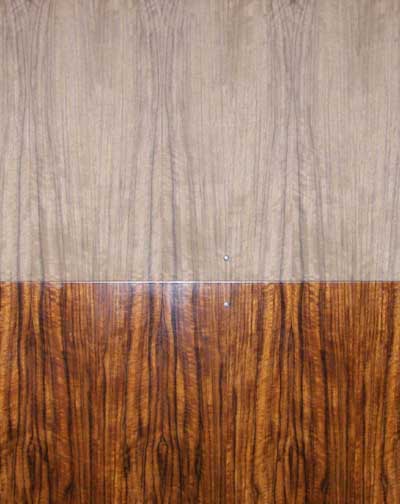Furniture woods........... Illustrated FURNITURE Glossary
Walnut
Walnut is a native wood, but is used in such prodigious quantity that it is also imported. Well seasoned it is exceedingly tough and little inclined to warp.
Colors: Light to dark chocolate brown
Properties: Walnut is strong, hard and durable, without being excessively heavy. It has excellent woodworking qualities, and takes finishes well. The wood has a straight grain in the trunk. Wavy grain is present toward the roots, and walnut stumps are often dug out and used as a source of highly figured veneer. Large burls are common. Walnut solids and veneers show a wide range of figures, including strips, burls, mottles, crotches, curls and butts. European walnut is lighter in color and slightly finer in texture than American black walnut, but otherwise comparable.
History
Walnut and oak were the primary cabinet making woods in 17th century Europe . Walnut and mahogany were the primary woods of the 18th century. In 18th century America , walnut was often stained to imitate mahogany.
"Age of Walnut": The Restoration, Stuart, William and Mary, and Queen Anne periods in England, which ran from about 1660 to 1714. Walnut was the dominant furniture and interior show wood.
See also: laminated ..... veneered ..... inlay ..... marquetry
- Bergere (shepherdess) chair - Hofmobileliendepot Imperial Furniture Collection,Vienna, Austria
- William and Mary highboy - Winterthur Museum
- Book matching veneers, burl walnut Victorian davenport - Private collection, Orchard Park, NY
- Eastlake bed burl walnut headboard panel - River Lea, Grand Island, NY
- Burl walnut table top - from the Georgia Forman House

Unvarnished

Unvarnished.

Unfinished / Treated with chromkali dye
Hofmobileliendepot Imperial Furniture Collection,Vienna,
Austria On display in 2005

Pyramid walnut. Unfinished / With sanding oil, treated, primed, and polished
Hofmobiliendepot Imperial Furniture Collection,Vienna, Austria. On display
in 2005.
|
Special thanks to Arthur Werner for his assistance. |
